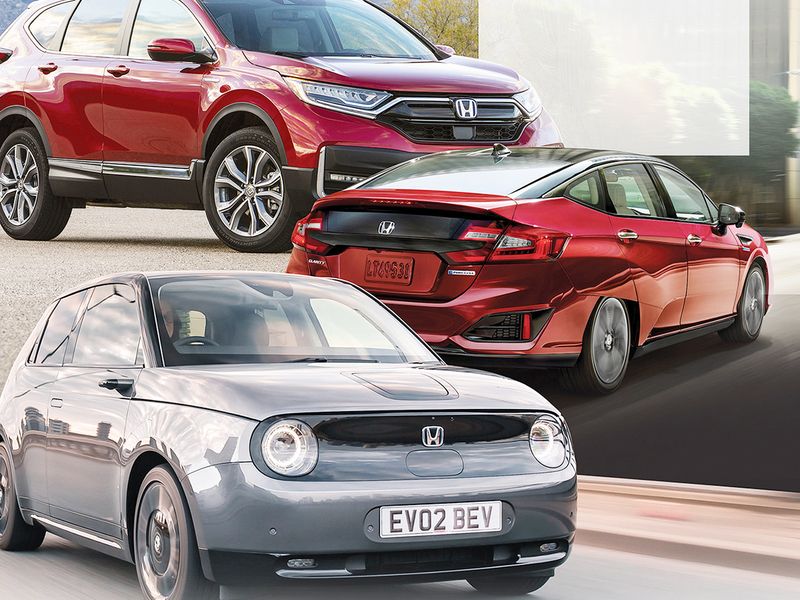
LOS ANGELES — As the world’s largest maker of internal combustion engines, Honda Motor Co. has been reluctant to join its automotive peers on the electrified bandwagon. In the U.S. market today, 93 percent of Honda’s sales come from gasoline-powered vehicles and just 7 percent from hybrids. EVs are zero.
But all that’s going to change.
Honda’s new global CEO, Toshihiro Mibe, has pledged to sell only zero-emission vehicles by 2040 and executives in the U.S. have been given their marching orders.
By early 2024, the Honda brand is expected to sell its first volume EV, aptly named the Prologue, followed by an Acura EV later that year.
“Our viewpoint is that it signals the start of a change, the start of a transition for Honda,” Dave Gardner, executive vice president of American Honda Motor Co., said on Automotive News’ “Daily Drive” podcast last week. “It’s almost like a startup business. We’re at zero today, and it’s going to be 100 percent of our business 20 years from now.”
Honda is leaning on General Motors for its first two volume EVs. They will use GM’s dedicated Ultium EV platform and its proprietary Ultium batteries. Honda will design the two vehicles’ exterior body and interior. The automaker has not offered details about the vehicles, but the Honda model likely will be a compact crossover and the Acura a midsize crossover.
Honda makes a small EV for Japan and Europe, marketed simply as the “E.” But that vehicle is considered a niche product, while Honda expects the Prologue to be its first volume EV.
Industry forecasters have told Automotive News that the coming Honda and Acura EVs will be built in GM plants, one in Mexico and one in the U.S. In April, without mentioning Honda, GM confirmed that it will invest $1 billion in its Ramos Arizpe plant in Mexico to prepare for EV production.
The outsourced vehicles could be a source of friction at Honda down the road given its extensive manufacturing base in North America and its proud engineering tradition. But Gardner said that partnering with GM for the first two EVs was beneficial for both companies from an investment perspective “and a good place for us to start.”
Honda Motor Co. makes automobiles, motorcycles and power equipment as part of its claim to fame as the biggest engine maker in the world. As all of those will transition to electric power, so will the jobs associated with them.
Gardner said that Honda plans to shift to its own automotive E:Architecture platform in the second half of the decade for future electric vehicles that will be made in its own factories. He didn’t detail what those vehicle types might be, but said there will be “a series” of Honda-developed electric vehicles.
“We’re not saying we’ll do it exclusively, and we’re not saying we’ll do it in conjunction with others,” Gardner said. “What we are saying is we will lead the development of the E:Architecture and that’s what will certainly take us to the end of the decade.”
Honda’s staggered goals for zero-emission vehicle sales globally is to reach 40 percent by 2030.
Some Honda rivals are far more aggressive in their plans to roll out EVs. Hyundai has two EV models that share a platform with gasoline vehicles. Hyundai will have its first EV on a dedicated platform, the Ioniq 5 compact crossover, in U.S. showrooms this fall. By 2024, Hyundai will add an Ioniq 6 sedan and Ioniq 7 midsize crossover.
Honda will move to increase hybrid sales as a transition to battery-electric vehicles, Gardner said, but he didn’t identify any new hybrid models or timelines. Currently, Honda has three sedan hybrids and a hybrid version of the CR-V compact crossover. The brand’s Passport and Pilot crossovers are due for a redesign in the next year or so.
“Step one for us is to increase that hybrid penetration,” Gardner said. “We believe there’s kind of a linear progression, where a consumer would move from a gasoline engine to a hybrid engine, and then into a fully electrified vehicle.” He suggested plug-in hybrids were not part of that transition from Honda’s perspective.
Gardner noted that EV infrastructure and battery supply also need to expand prior to large-scale EV rollouts.
Globally, Honda is targeting an increase from 40 percent of its sales from zero-emissions vehicles in 2030 to 80 percent in 2035. But as its first step, the 2024 Prologue EV should outsell the Passport crossover within a relatively short period of time, the executive said. Last year, Honda sold 39,564 of the midsize Passport.
He did not rule out the future of hydrogen vehicles as part of the automaker’s zero-emissions product mix. Honda is discontinuing its Clarity fuel cell vehicle, which is available only near California hydrogen fueling stations. The automaker also is discontinuing sales of its Clarity plug-in hybrid sedan after the current model year.
“I don’t want to discount hydrogen fuel cell,” Gardner said. “That’s certainly a technology that Honda continues to work on, invest in and develop. And while in the short term we are moving away from [hydrogen] passenger-car applications, when we talk about 2040 zero emissions, I think we’re talking about both — a full battery-electric and potentially a hydrogen fuel cell product in the mix at that time.”

